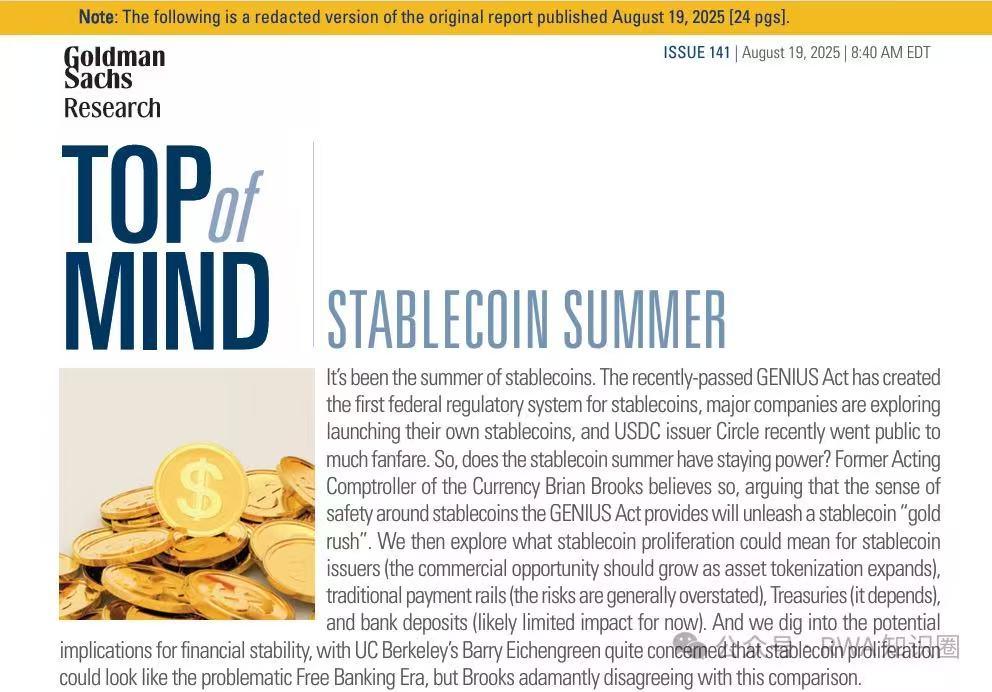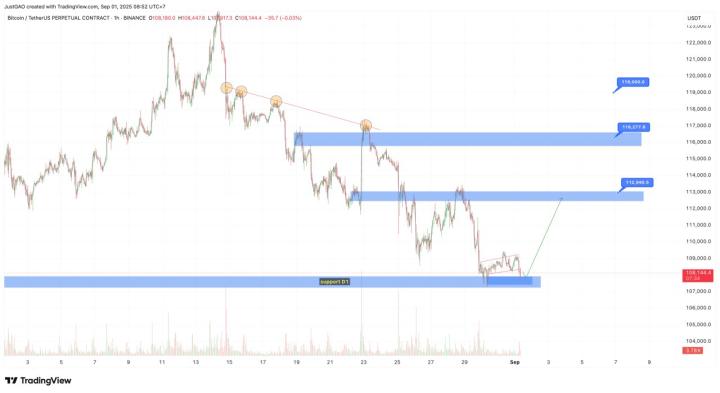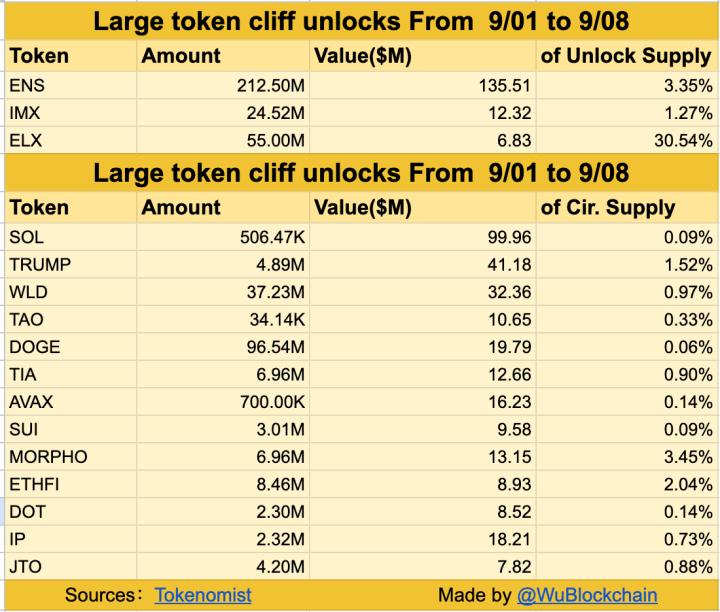
1. The summer of stablecoins has arrived
On August 19th, Goldman Sachs released a major research report, "Summer of Stablecoins," which predicted a "gold rush" for stablecoins following the passage of the GENIUS Act. Analysts James Yarrow and Will Nance analyzed the market from the perspectives of "business opportunities" and "payments transformation," respectively, concluding that opportunities for stablecoin issuers are expanding as asset tokenization progresses.
If we place today's stablecoins in historical context, their role is very similar to that of online payments during the early days of the internet. Back then, no one imagined that a small digital payment interface would ultimately reshape the global retail industry. Today, however, stablecoins are redefining how global capital flows.

2. Regions with Scarce US Dollar Accounts: Natural Markets for Stablecoins
The most important application scenario for stablecoins is not in the United States, but in areas where US dollar accounts are scarce.
In Latin America, Africa, and even some BRICS countries, where local currencies are volatile and inflation is high, people are more willing to hold stablecoins pegged to the US dollar than their own currencies. Argentina is a prime example: more and more residents are choosing USDC over the peso, which can depreciate overnight.
What does this mean for businesses?
For example, if a Chinese e-commerce company expanding into Latin America insists on accepting only local currencies, it could lose over 30% of its orders due to consumer reluctance to pay. Conversely, accepting stablecoin payments would not only stabilize revenue but also mitigate losses from exchange rate fluctuations.
According to a conservative estimate by Goldman Sachs, 2 billion adults worldwide prefer to store their net worth in US dollars, but currently lack US dollar accounts . This represents the largest incremental market for stablecoins.
3. Cross-border payment revolution: cheaper, faster, more flexible
Another huge value is cross-border payment.
Traditional cross-border remittances are like a truck repeatedly paying tolls on highways in different countries—slow and expensive. Stablecoin payments are more like a direct flight: low-cost, fast, and available year-round.
Goldman Sachs research report estimates:
- Multinational companies can save an average of about 7% of traditional remittance costs by using stablecoins for settlement;
- Remittance companies can reduce the amount of weekend reserved funds by using stablecoins for 24/7 settlement;
- The fund settlement cycle can also be significantly shortened.
For this reason, payment giants like Visa and Mastercard have already taken the lead. Visa predicts that stablecoin transaction settlement volume will exceed $1 billion within the next 12-18 months. For ordinary businesses, partnering with these giants is often the best shortcut to entering the new era of cross-border payments.
4. Who can issue stablecoins? New opportunities for medium-sized enterprises
Stablecoins are not only for giants, small and medium-sized enterprises also have opportunities.
- Small businesses → can partner with banks, payment giants, or accelerators to initially access stablecoin payments.
- Medium-sized enterprises → can consider issuing their own stablecoins.
There are two main distribution models:
- Direct issuance : The issuer mints its own stablecoins, and the interest generated by reserve assets (US dollars, government bonds, etc.) is the issuer's income. USDC and USDT are representative examples.
- White Label : The platform uses a third party (such as Paxos) to issue the tokens and sells them to users. Revenue sharing varies, with some returning almost all to the partner (such as USDG), others retaining all (such as USDT), and others offering a 6:4 split (such as USDC).
This can be understood as a quasi-financial model: a company earns interest income from its reserve assets, which it then distributes to partners or retains for itself. For mid-sized companies, this was a previously inaccessible way to increase revenue, but is now possible thanks to the emergence of stablecoins.
5. Risk and Compliance: An Account Enterprises Must Clearly Reckon
Of course, Goldman Sachs also reminds that stablecoins are not risk-free.
To truly calculate the savings from stablecoins, we must consider:
- Deposit and withdrawal costs
- Foreign exchange fees
- KYC/AML compliance costs
- Fraud and anti-fraud costs
If companies rush into this venture, they risk stumbling upon regulatory or compliance issues, potentially losing more than they gain. Consequently, more and more companies are choosing to partner with professional RWA accelerators , offloading the costs and risks to the professionals while focusing on business development.
6. Beyond Stablecoins: The Broader Blue Ocean of RWA
Stablecoins are just the tip of the iceberg when it comes to RWA (tokenization of real-world assets).
Take the $13 trillion US mortgage market as an example. Currently, expensive processes such as appraisals, title insurance, and offline signing are required. Blockchain can automate much of this process at low cost, significantly improving efficiency.
Robinhood and Kraken are already experimenting with tokenized stocks, with the following goals:
- Opening up US stock trading to European users;
- Provide 24/7 trading;
- Providing access channels to regions that lack mature brokerage markets.
In the future, as more real estate, bonds, and stocks become tokenized, stablecoins will become the natural settlement tool on the chain. In other words: the larger the RWA, the greater the value of the stablecoin.
7. Seizing the Summer: A Three-Step Strategy for Enterprises
For businesses, the opportunities are clear:
- First, access payment : quickly test stablecoin payments through cooperative platforms.
- Explore distribution again : Choose direct distribution or white label mode based on your own scale and ecosystem.
- Finally, we enter RWA : implementing it in scenarios such as supply chain finance and asset tokenization to form differentiated advantages.
However, the Goldman Sachs research report also warns that the development of stablecoins and RWAs is not "zero-barrier," involving complex issues such as compliance, risk management, and technical integration. For most companies, the most effective approach is to leverage a professional RWA accelerator —which can both mitigate compliance risks and provide professional support in business planning, partner screening, and implementation.








